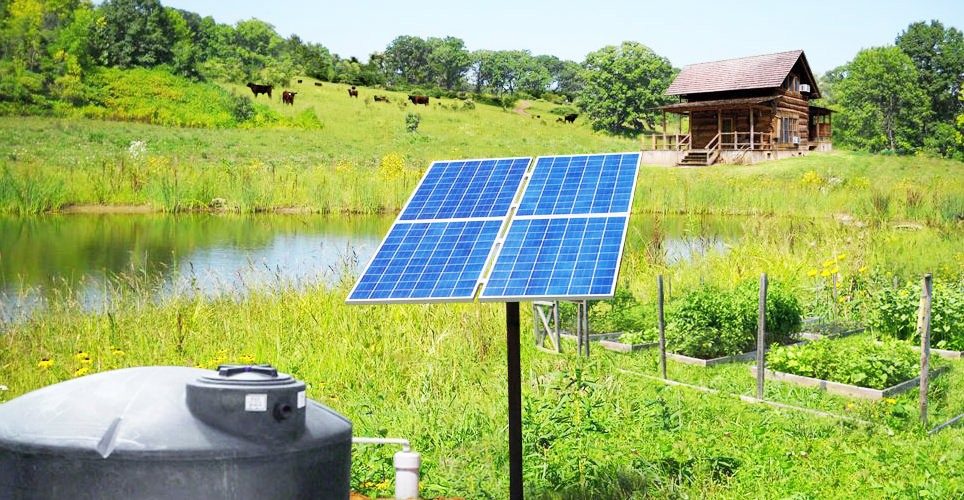
Introduction
Solar-powered agriculture has gained significant attention in recent years due to its potential to revolutionize food production. This article explores the relevance of solar-powered agriculture in terms of sustainability, food security, and climate change. Additionally, it highlights the importance and potential benefits of integrating solar energy into farming practices.
Historical Background
Solar energy usage in agriculture has a long history, with ancient civilizations utilizing the sun’s power for various agricultural tasks. However, the modern development of solar-powered agriculture began in the 1970s when solar energy technologies started gaining traction. Since then, there have been several attempts and developments in solar-powered agriculture, with the integration of solar energy into mainstream food production becoming more prevalent.
Key Concepts and Definitions
Solar-powered agriculture refers to the utilization of solar energy in farming practices. It involves the use of photovoltaic systems to power various agricultural tasks, such as irrigation and greenhouse systems.
Main Discussion Points
Benefits of Solar-Powered Agriculture
Solar-powered agriculture reduces energy costs and decreases reliance on fossil fuels. By utilizing solar energy, farmers can significantly lower their energy expenses, making farming more economically viable. Solar-powered agriculture also contributes to increased energy independence, reducing vulnerability to fluctuating energy prices and supply disruptions. Additionally, it reduces carbon emissions and environmental impact, promoting a more sustainable food production system.
Improved Efficiency and Productivity
Solar-powered agriculture enhances efficiency and productivity in food production. The optimized use of solar-powered irrigation systems allows for increased crop yields by providing a consistent and controlled water supply. It also enables the cultivation of crops in non-traditional regions and extends growing seasons through the use of solar-powered greenhouse systems. These systems offer enhanced control over environmental factors, resulting in improved crop quality and yield.
Economic and Social Impacts
Solar-powered agriculture has significant economic and social impacts. It creates job opportunities and economic growth in the solar energy sector. Additionally, it improves access to fresh, locally produced food, reducing dependence on long-distance transportation and enhancing food security. Furthermore, it has the potential to drive rural development and alleviate poverty by providing income-generating opportunities for farmers.
Case Studies or Examples
Successful solar-powered agriculture projects serve as inspiring examples of the potential of this innovative approach. For instance, solar-powered drip irrigation systems in India have helped farmers increase crop yields and conserve water resources. In the United States, solar-powered aquaponics farms have demonstrated the energy efficiency and environmental benefits of integrating solar energy into fish and vegetable production. In Japan, solar-powered vertical farming has revolutionized urban agriculture, enabling year-round production in densely populated areas.
Current Trends or Developments
Recent advancements in solar technology have paved the way for further innovation in agricultural applications. For example, solar-powered desalination systems can provide a sustainable water source for farming in arid regions. Ongoing research focuses on developing more efficient solar panels and energy storage solutions, making solar-powered agriculture even more economically viable and accessible. Policy and regulatory developments supporting the adoption of solar-powered agriculture are also emerging, providing incentives and frameworks for farmers to invest in solar energy systems.
Challenges or Controversies
While solar-powered agriculture holds great potential, it faces certain challenges and controversies. High upfront costs and financial barriers often deter farmers from investing in solar energy systems. Additionally, technical limitations and maintenance requirements can pose challenges for farmers with limited technical expertise. Moreover, the scalability of solar-powered agriculture for large-scale farming operations is still a topic of debate, as the efficiency and effectiveness of such systems on a larger scale need further exploration.
Future Outlook
The future of solar-powered agriculture holds immense promise. Continued advancements in solar technology, along with decreasing costs, will make solar energy more accessible to farmers of all scales. Solar-powered agriculture is expected to play a vital role in achieving global food security and sustainable development goals. Collaboration and partnerships between the agriculture and solar energy sectors will drive further innovation in the field, leading to more efficient and sustainable farming practices.
Conclusion
Solar-powered agriculture has the potential to revolutionize food production by providing sustainable and efficient solutions. It offers numerous benefits, including reduced energy costs, increased productivity, and economic and social impacts. Successful case studies highlight the feasibility and positive outcomes of integrating solar energy into farming practices. Despite challenges and controversies, the future outlook for solar-powered agriculture is promising, with the potential to contribute significantly to global food security and sustainable development.